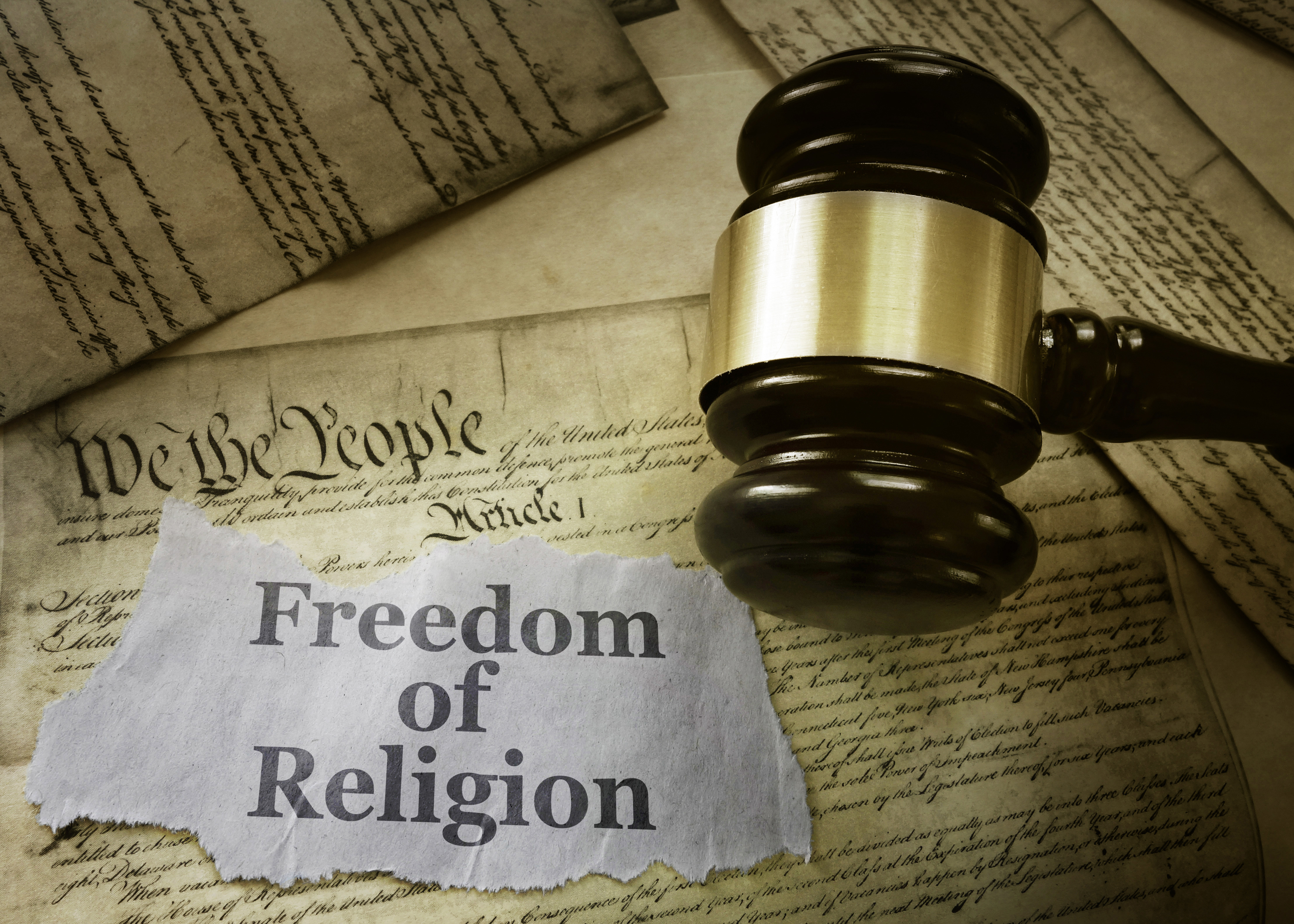
This three part series looks at rulings which show courts are beginning to recognize to impose severe restrictions on religious worship constitutes a violation of the free expression clause of First Amendment.
Just in case you think I’m being too harsh in my sarcastic, ridiculing comments regarding the attacks on the First Amendment, you really need to check out some of these court rulings.
In terms of criticism of constitution-ignoring governments I am a mere simplistic lightweight simpleton with lightweight rhetoric compared to any one of the following judges. I wouldn’t think of calling the alleged thought process of the California government specious.
These posts focus on two lower courts that re-read the U.S. Constitution after the U.S. Supreme Court started the refreshing trend of actually reading said Constitution. The cases:
- Supreme Court – Roman Catholic Diocese of Brooklyn (previous post)
- California Superior Court – Bakersfield Division – Father Trevor Burfitt vs Gavin Newsom (current discussion)
- Ninth Circuit –Calvary Chapel Dayton Valley v. Sisolak.
California Superior Court – Bakersfield Division – Father Trevor Burfitt vs Gavin Newsom
12/11/20 – Hill Faith – California Court Delivers Stinging Rebuke To Newsom’s Anti-Church Covid-19 Regulations – California Superior Court Judge Gregory Pulskamp granted a preliminary injunction allowing several churches to continue worship, after finding the state requirements violate the California Constitution.
The ruling is titled Father Trevor Burfitt vs Gavin Newsom and can be found here.
The core issue is concealed in this technical sentence on page 1:
“Although Defendants collectively advocate for the use of a “rational basis” standard, it is clear that when restrictions appear to treat religious activity less favorably than comparable secular activities, the restrictions are subject to “strict scrutiny.””
If you understood that sentence, you can already guess what the ruling will be.
To my little pea-brain, the case is almost resolved when this sentence is provided on page 2:
“In this case, the restrictions are not “neutral” and of “general applicability” because they assign entities into disparate classifications which results in religious activities being treated less favorably than comparable secular activities.”
Following comment is so scathing it ought to be wrapped in fire-resistant fabric:
“Entities permitted to engage in indoor activities – also known as “essential businesses” or “critical infrastructure” – include big-box retail stores, grocery stores, home improvement stores, hotels, airports, train stations, bus stations, movie production houses, warehouses, factories, schools, and a lengthy list of additional businesses. It is important to note that almost all of the entities that are allowed to host indoor operations do not engage in activity that is constitutionally protected, whereas houses of worship do.
Nowhere does the Constitution mention home improvement stores or movie production companies, yet they are allowed to continue indoor operations while constitutionally protected worship services are not. Ouch.
After summarizing the government’s response to the strict scrutiny issue, the ruling continues:
“To the contrary, based on the evidence presented (or lack thereof) and common knowledge, it appears that shoppers at a Costco, Walmart, Home Depot, etc. may – and frequently do – congregate in numbers, proximity, and duration that is very comparable to worshippers in houses of worship. Defendants have not convincingly established that the health risks associated with houses of worship would be any different than “essential businesses” or “critical infrastructure,” assuming the same requirements of social distancing and the wearing of masks were applied across the board
So, no difference in risk between a trip to Costco and sitting through a worship service. Double ouch.
Ruling then cites comment by Justice Kavanaugh in Roman Catholic Diocese of Brooklyn:
“Assuming all of the same precautions are taken, why can someone safely walk down a grocery store aisle but not a pew? And why can someone safely interact with a brave deliverywoman but not with a stoic minister?”
Why indeed.
The ruling continues to identify that the New York restrictions of 10 people in “red zones” and 25 in “orange zones” were categorized by the Supreme Court as “very severe restrictions.” What then to make of the California restrictions which set the restriction at zero for indoor worship? Seems to me that zero would be an order of magnitude beyond “very severe restrictions.”
Ruling then explains the government has not demonstrated that are indoor worship word “negatively impact public health.”
The court finds as specious the government’s argument that watching TV is the same as worshiping in person. Don’t believe a court could be that harsh? Check it out for yourself:
“Similarly, Defendants’ protestations that religious services may still be offered through means of modern telecommunication, such as TV or web-based platforms, seem specious because, as noted in Roman Catholic Diocese, “such remote viewing is not the same as personal attendance.” “
I just had to go look up the definition of specious:
specious
adjective
superficially plausible, but actually wrong.
misleading in appearance, especially misleadingly attractive.
Let me rephrase the comment:
Government protestations that religious services may still be offered through means of modern telecommunication are superficially plausible but actually wrong and in fact are misleading in appearance.
Specious arguments. Ouch, ouch, ouch.
The court ruled the state requirements are a clear violation of the California Constitution:
“The free exercise of religion clause in the California Constitution prohibits Defendants from treating religious activities worse than comparable secular activities. California’s current Covid-related restrictions do exactly that.”
The court granted a temporary injunction against the state of California until a full trial is held on the merits of the case.
Care to make any wild guess what the court will be thinking at trial, guided by the recent SCOTUS ruling?
Next post: ruling from the Ninth Circuit applying the Supreme Court ruling to rules in Nevada. Hint: the rules violate the U.S. Constitution.